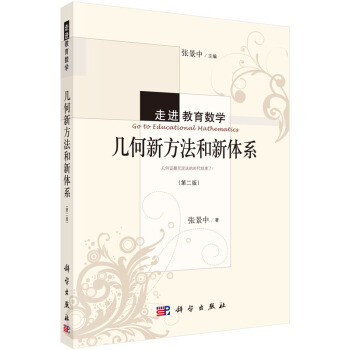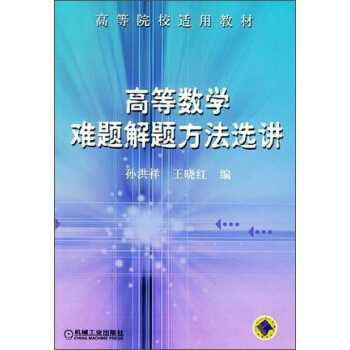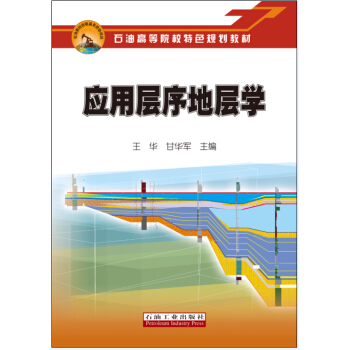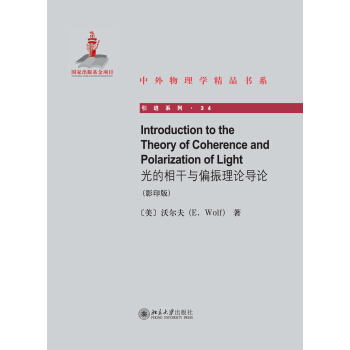

具体描述
编辑推荐
光的相干和偏振是光学中最重要的现象,其应用也极为广泛。《光的相干与偏振理论导论(英文影印版)》的作者是国际光学界的著名学者,在相关的研究取中取得过突破性的进展。也正是因为作者的贡献,本书能够以统一处理方法研究光的相干与偏振这两种现象。对于光通信、光学成像等领域的研究者及研究生,乃至对此领域感兴趣的读者来说,本书是不可多得的优秀读物。内容简介
所有的光场都是随机涨落的,有些光场的随机涨落很小,例如许多激光器输出的光;有些光场的随机涨落相当大,例如从热光源辐射的光。描述涨落光场的基础理论是相干理论。部分偏振现象就是涨落的重要表现。实际上,相干理论所能处理的问题不仅限于涨落。与常规的处理方法不同,相干理论是依据可观测量描述光场,并解释这些可观测量,例如光的光谱以及它在传输中如何变化的。《光的相干与偏振理论导论(英文影印版)》给出了光的相干与偏振现象的统一处理方法。适合光通信、激光光束在光纤中和通过湍流大气传输、光学成像,尤其在显微镜成像(例如医学诊断)的物理界和工程界的研究者阅读。
作者简介
(美) 沃尔夫(E. Wolf),美国罗彻斯特大学教授。目录
Preface page xi1. Elementary coherence phenomena 1
1.1 Interference and statistical similarity 1
1.2 Temporal coherence and the coherence time 4
1.3 Spatial coherence and the coherence area 5
1.4 The coherence volume 8
Problems 10
2. Mathematical preliminaries 11
2.1 Elementary concepts of the theory of random processes 11
2.2 Ergodicity 17
2.3 Complex representation of a real signal and the envelope
of a narrow-band signal 19
2.4 The autocorrelation and the cross-correlation functions 22
2.4.1 The autocorrelation function of a finite sum of periodic
components with random amplitudes 24
2.5 The spectral density and the Wiener-Khintchine theorem 25
Problems 29
3. Second-order coherence phenomena in the space-time domain 31
3.1 Interference law for stationary optical fields. The mutual
coherence function and the complex degree of coherence 31
3.2 Generation of spatial coherence from an incoherent source.
The van Cittert-Zernike theorem 37
3.3 Illustrative examples 46
3.3.1 Michelson's method for measuring stellar diameters 46
3.3.2 Michelson's method for determining energy distribution
in spectral lines 51
3.4 Propagation of the mutual intensity 54
3.5 Wave equations for the propagation of mutual coherence in free space 56
Problems 58
4. Second-order coherence phenomena in the space-frequency domain 60
4.1 Coherent-mode representation and the cross-spectral density
as a correlation function 60
4.2 The spectral interference law and the spectral degree of coherence 63
4.3 An illustrative example: spectral changes on interference 69
4.4 Interference of narrow-band light 73
Problems 76
5. Radiation from sources of different states of coherence 79
5.1 Fields generated by sources with different coherence properties 79
5.2 Correlations and the spectral density in the far field 81
5.3 Radiation from some model sources 88
5.3.1 Schell-model sources 88
5.3.2 Quasi-homogeneous sources 90
5.4 Sources of different states of spatial coherence which generate
identical distributions of the radiant intensity 95
5.5 Coherence properties of Lambertian sources 97
5.6 Spectral changes on propagation. The scaling law 102
Problems 108
6. Coherence effects in scattering 111
6.1 Scattering of a monochromatic plane wave on a deterministic medium 111
6.2 Scattering of partially coherent waves on a deterministic medium 115
6.3 Scattering on random media 118
6.3.1 General formulas 118
6.3.2 Examples 121
6.3.3 Scattering on a quasi-homogeneous medium 123
Problems 127
7. Higher-order coherence effects 129
7.1 Introduction 129
7.2 Intensity interferometry with radio waves 131
7.3 The Hanbury Brown-Twiss effect and intensity interferometry with light 134
7.4 Einstein's formula for energy fluctuations in blackbody radiation
and the wave-particle duality 140
7.5 Mandel's theory of photoelectric detection of light fluctuations 143
7.5.1 Mandel's formula for photocount statistics 143
7.5.2 The variance of counts from a single photodetector 145
7.5.3 Correlation between count fluctuations from two detectors 147
7.6 Determination of statistical properties of light from photocount
measurements 149
Problems 151
8. Elementary theory of polarization of stochastic electromagnetic beams 154
8.1 The 2 _ 2 equal-time correlation matrix of a quasi-monochromatic
electromagnetic beam 154
8.2 Polarized, unpolarized and partially polarized light. The degree
of polarization 158
8.2.1 Completely polarized light 158
8.2.2 Natural (unpolarized) light 160
8.2.3 Partially polarized light and the degree of polarization 161
8.2.4 The geometrical significance of complete polarization. The Stokes
parameters of completely polarized light. The Poincaré sphere 165
Problems 171
9. Unified theory of polarization and coherence 174
9.1 The 2 _ 2 cross-spectral density matrix of a stochastic
electromagnetic beam 174
9.2 The spectral interference law, the spectral degree of coherence
and the spectral degree of polarization of stochastic
electromagnetic beams 175
9.3 Determination of the cross-spectral density matrix from experiments 179
9.4 Changes in random electromagnetic beams on propagation 181
9.4.1 Propagation of the cross-spectral density matrix of a stochastic
electromagnetic beam - general formulas 181
9.4.2 Propagation of the cross-spectral density matrix of an
electromagnetic Gaussian Schell-model beam 183
9.4.3 Examples of correlation-induced changes in stochastic
electromagnetic beams on propagation 186
9.4.4 Coherence-induced changes of the degree of polarization
in Young's interference experiment 191
9.5 Generalized Stokes parameters 194
Problems 197
Appendices 202
I Cells of phase space and the degeneracy parameter 202
(a) Cells of phase space of a quasi-monochromatic light wave (Section 1.4) 202
(b) Cells of phase space of radiation in a cavity (Sections 7.4 and 7.5) 204
(c) The degeneracy parameter 206
II Derivation of Mandel's formula for photocount statistics
[Eq. (2) of Section 7.5.1] 208
III The degree of polarization of an electromagnetic Gaussian
Schell-model source 210
IV Some important probability distributions 212
(a) The binomial (or Bernoulli) distribution and some of its limiting cases 212
(b) The Bose-Einstein distribution 214
Author index 216
Subject index 220
前言/序言
用户评价
说实话,购买这本《光的相干与偏振理论导论》(英文影印版)更多的是出于一种情怀和对知识的敬畏。我并非光学专业的学生,也早已过了那个需要在课堂上啃读教材的年纪,但对科学的探索欲从未减退。这本影印版的图书,散发着一股浓厚的学术气息,让我想起大学时期那些埋头苦读的时光。我至今仍记得,当年在学习光学时,对于相干性这个概念总是觉得有些抽象,偏振现象更是难以用直观的方式理解。这本书的出现,让我有机会重新审视这些曾经让我感到困惑的知识点。虽然我还没有时间去仔细阅读,但仅凭其厚度和目录的详尽程度,我就能预见到其中蕴含的深度。我希望通过这本书,能够以一种更加成熟的视角去理解光学现象,也许还能从中发现一些新的趣味,比如它在现代科技,如激光、光通信等领域的具体应用,那将是我非常期待的收获。
评分坦白讲,我购入这本书《光的相干与偏振理论导论》(英文影印版)更多的是因为它的“原版”魅力。在这个信息爆炸的时代,各种经过“消化”和“简化”的读物层出不穷,但总感觉少了些原汁原味的韵味。这本影印版,虽然在排版上可能不如现代书籍那般华丽,但它带来的那种直接、纯粹的学术氛围,是其他任何版本都无法比拟的。我设想,作者在撰写时,定是倾注了大量的心血,将复杂的物理概念层层剥离,用最严谨的语言进行阐述。我期待的不仅仅是知识本身,更是阅读过程中那种与作者思想直接对话的感觉。对于“相干”与“偏振”这些重要的光学概念,我希望能在这本书中找到最权威、最深入的解读,理解其背后的物理机制,以及它们在物理学发展史上的重要地位。这本书,对我来说,更像是一种对知识本源的追溯。
评分初拿到这本《光的相干与偏振理论导论》(英文影印版),首先映入眼帘的是那厚实而略带泛黄的纸张,瞬间唤醒了我学生时代翻阅经典教科书的记忆。封面设计简洁却不失严谨,一看便知是学术领域内力求扎实的代表。尽管我尚未深入研读其中任何一个章节,但仅仅是随意翻阅目录,便能感受到作者编排的精妙之处。从基础的光波概念入手,逐步过渡到相干性的深入探讨,再到偏振现象的层层剖析,逻辑链条清晰且富有条理。我尤其对其中关于相干性在干涉和衍射现象中的作用的阐述感到好奇,期待能够借此机会将理论知识与那些在实验室中亲手做过的实验联系起来,加深对光的波动本质的理解。这本书似乎不属于那种“速成”或“入门”的快餐读物,而更像是一位循循善诱的良师,引导读者一步一个脚印地踏入光学研究的殿堂。它的出现,无疑为我提供了一个系统梳理和巩固光学知识的绝佳平台。
评分这本《光的相干与偏振理论导论》(英文影印版)在我手中,仿佛是一个沉甸甸的宝藏。我是一位对物理学充满热情的业余爱好者,平日里也涉猎了不少科普读物,但总觉得浅尝辄止。这次购入这本书,是希望能够系统地、深入地了解光学中的核心概念。从名字上看,“相干”和“偏振”这两个词就充满了科学的严谨和趣味。我尤其对“相干性”在描述光波叠加时的作用感到好奇,它是否能够解释为什么某些光源能够产生稳定的干涉条纹,而另一些则不行?同样,“偏振”的概念,在自然界中是如何体现的?比如我们看到的蓝天,以及某些材料对光的选择性反射,是否都与偏振有关?这本书的影印版,保留了原汁原味的学术风格,这对我来说是一种特别的吸引力。我期待在阅读过程中,不仅能够掌握理论知识,更能从中体会到物理学家们严谨的治学态度和探索精神。
评分这本书《光的相干与偏振理论导论》(英文影印版)的到来,对我来说,是一次蓄谋已久的“学术回归”。我曾经在学习光学时,对相干性和偏振这两个概念留下了深刻的印象,但随着时间的推移,很多细节已经变得模糊。现在,我希望能够通过一本权威的书籍,重新梳理和巩固这些知识。这本书的英文影印版,让我有一种直接接触一手学术资料的真实感。我期待在书中能够看到清晰的理论推导,丰富的数学公式,以及对实验现象的深入分析。我尤其希望能够理解,相干性是如何影响光的干涉和衍射的,以及偏振现象是如何产生的,又有哪些实际的应用。这本书的厚度也暗示了其内容的丰富性,我相信它能够满足我对光学深入探索的需求,帮助我构建一个更加完整和扎实的光学知识体系,甚至为我今后的研究或工作提供重要的理论支持。
评分好!
评分光的相干和偏振是光学中最重要的现象,其应用也极为广泛。《光的相干与偏振理论导论(英文影印版)》的作者是国际光学界的著名学者,在相关的研究取中取得过突破性的进展。也正是因为作者的贡献,本书能够以统一处理方法研究光的相干与偏振这两种现象。对于光通信、光学成像等领域的研究者及研究生,乃至对此领域感兴趣的读者来说,本书是不可多得的优秀读物。
评分很好,很强大
评分挺好的 可以购买的 给点建议
评分光的相干与偏振理论导论(英文影印版)
评分大牛的书,要反复反复研读。
评分因为需要才买的,不过这书印制的时候采用的油墨有股异味,整体不像平时买的书那种书香,相反味道很刺鼻!!!不知道是不是镉汞超标了!
评分好。
评分满意……
相关图书
本站所有内容均为互联网搜索引擎提供的公开搜索信息,本站不存储任何数据与内容,任何内容与数据均与本站无关,如有需要请联系相关搜索引擎包括但不限于百度,google,bing,sogou 等
© 2025 book.tinynews.org All Rights Reserved. 静思书屋 版权所有

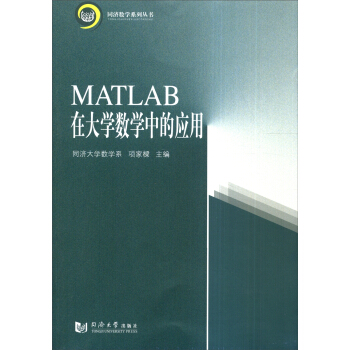
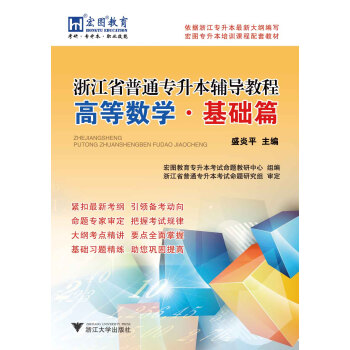

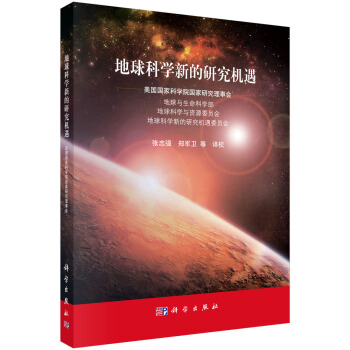
![量子光学中的统计方法(第2卷) [Statistical Methods in Quantum Optics 2] pdf epub mobi 电子书 下载](https://pic.tinynews.org/11582553/54744a76N467b4ea6.jpg)
![组织化学与细胞化学技术(第2版)/国家卫生和计划生育委员会“十二五”规划教材 [Histochemical and Cytochemical Techniques] pdf epub mobi 电子书 下载](https://pic.tinynews.org/11613578/555c4d9bNa1995e6e.jpg)
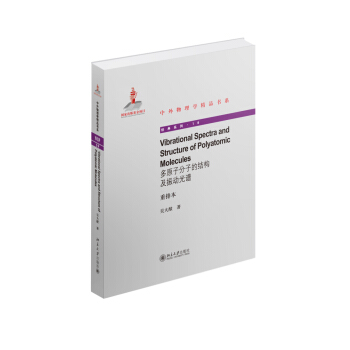



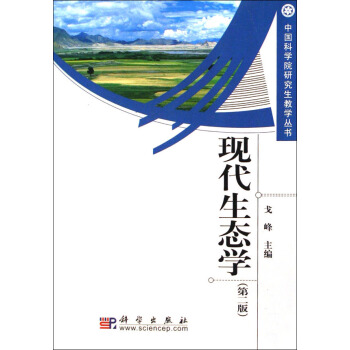
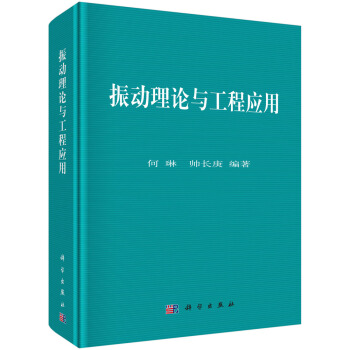


![《nature自然》百年科学经典第七卷(1985-1992)(英汉对照精装版) [Nature:The Living Record of Science] pdf epub mobi 电子书 下载](https://pic.tinynews.org/11722437/56ef5a06Nf36a7024.jpg)
![科学思想史丛书:地理学思想史(第4版) [A History of Geographical Thoughts] pdf epub mobi 电子书 下载](https://pic.tinynews.org/11737850/55b08fd5Nb4f56aed.jpg)
